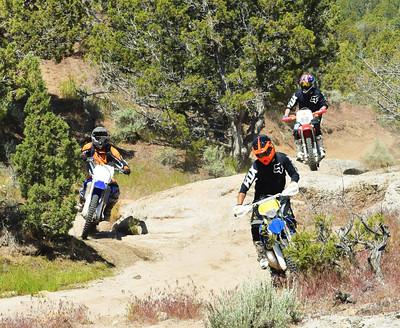Motorcycle races coming for Fort Sage area; some trail access will be limited
Organization:
BLM Office:
Media Contact:
DOYLE, Calif. – The Bureau of Land Management expects up to 200 riders to participate in the Diamond Back Hare Scrambles motorcycle race, Saturday and Sunday, March 11 and 12, at the Fort Sage Off-Highway Vehicle Area near Doyle. For safety reasons, trail access will be available only to participants while the races are underway.
Spectators are welcome at designated viewing areas. Participants and visitors can camp overnight at the Raptor Trailhead just off the main Fort Sage entrance road. There are signs for the trailhead. Single-day visitors should use parking areas along the access roads.
“Working with race organizers, we have planned a racecourse that will provide challenges for riders while avoiding areas still recovering from wildfires,” said Emily Ryan, manager of the BLM Eagle Lake Field Office in Susanville. “We are pleased to provide this site for competitive dirt bike riders.”
To reach the Fort Sage OHV Area, take Laver Crossing from east from U. S. Highway 395 just north of Doyle and follow the directional signs about four miles to the Raptor Trailhead.
The Lassen Motorcycle Club and American Motorcyclist Association Division 36 sponsor this race under a special recreation permit from the BLM. The organizers will provide course marshals, and the BLM will provide law enforcement rangers and staff to help monitor the event.
For more information, telephone Marisa Williams at the BLM office in Susanville, 530-252-5303. Visit the BLM website for more information about the Fort Sage Off-Highway Vehicle Area.
The BLM manages more than 245 million acres of public land located primarily in 12 western states, including Alaska, on behalf of the American people. The BLM also administers 700 million acres of sub-surface mineral estate throughout the nation. Our mission is to sustain the health, diversity, and productivity of America’s public lands for the use and enjoyment of present and future generations.

